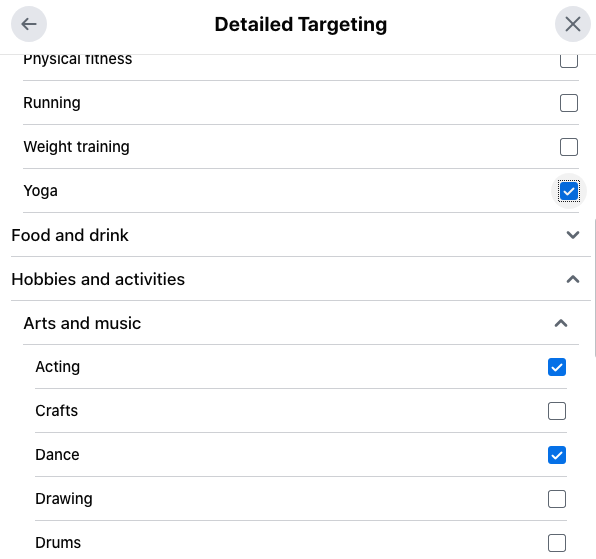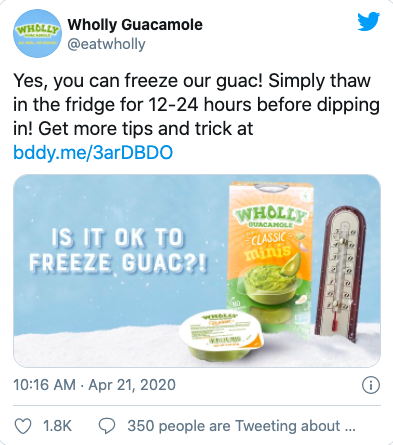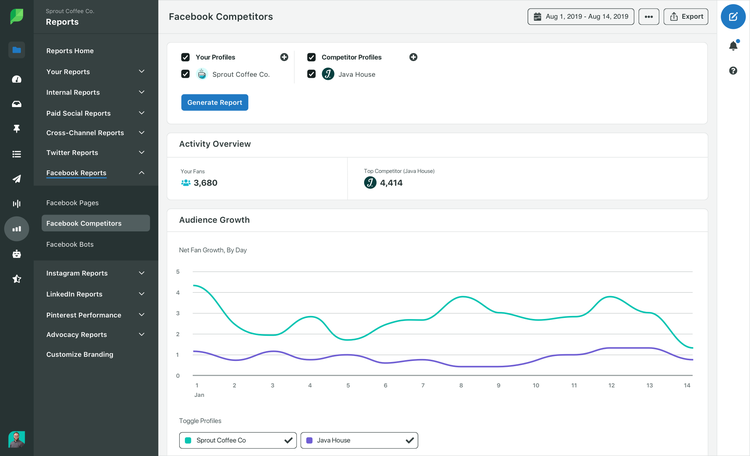Whether you’re a pro at small business advertising or brand-new at the process, it’s important to consistently fine-tune your marketing plan, making it as specific and effective as possible.
Not every business has a large budget for aggressive advertising campaigns. Because of this, many small businesses choose to rely on word-of-mouth or small ads to keep their business going. Or worse, they cut advertising from their budget altogether -- eek!
With our focused tips, you’ll be able to stretch even the most modest of budgets to successfully grow, expand, and promote your business. Trust us, a supercharged advertising campaign is worth every dollar spent. How else are you going to rake in those new customers?
Overview: What is business advertising?
The psychology behind advertising is to convince people that they need your product or service; their lives will be better because of it. With this knowledge, you need to present them with a persuasive message, lure them to click on it, and wait for them to (hopefully) purchase it.
At the core, your mission is to connect with all customers -- past, current, and future. It’s that simple. The steps you take to achieve this vary greatly, such as displaying posters or banners, paying for digital advertising, or creating an engaging newsletter.
A good ad conveys exactly what you’re selling or offering, and why it’s important. For example, why does someone need to buy this specific sneaker? Why are you the best music teacher in town? Use persuasive words and images in your advertising campaigns to sell yourself -- and your product.
Most importantly, you want to design and direct your ads so they appeal to those who’re most likely to be your customers.
For example, if you’re a music teacher, investing in website advertising on a musical instrument site would be advantageous; a dad buys a guitar for his son, sees your smiling face, and clicks on your link. Bam -- you’ve got yourself a new customer.
With enough effort, dedication, and innovative advertising ideas, your business can grow and grow. Just watch, you’ll see.
4 benefits of investing in your small business advertising
Your business needs advertising just like your body needs oxygen. Without it, you risk struggling, or worse, going under. But with a strong, healthy dose of effective advertising, your business will pulsate with vitality.
Here are four benefits you’ll experience when you set aside the time and funds needed to properly advertise your business.
1. Builds brand awareness
The more your business name pops up in people’s daily lives -- in their Facebook feed, in an interesting article, or even in their inbox -- the more likely they are to develop a long-lasting opinion of and relationship with your brand.
Your goal is to create familiarity, trust, and dependability with your customers. Then, when they’re faced with a choice, such as your product or that of a competitor, they’ll pick yours. Let’s face it, we’re hard-wired to pick products we know we’ll like -- nobody wants to shell out money for junk.
2. Increases website traffic
An effective advertising campaign can direct potential customers to your website. This, in turn, will help them learn about the vast array of products and services you offer.
If you include an incentive on your website, such as a coupon code for submitting an email address, you’ll be able to retain these customers for future marketing efforts.
3. Attracts new customers
Even if you have a healthy number of dedicated customers, it’s important to know that people and their needs change often, and sometimes without notice. Therefore, advertising should always be a part of your business plan, helping keep those new customers flowing in.
And even though word-of-mouth isn’t an effective campaign on its own, know that every new customer you gain will most likely share details of your business with their social network -- either by talking, sharing on Facebook, or buying a friend a gift card. So every new customer is worth so much more than just one person.
4. Increases earnings
The simple truth is that advertising works! When people consistently see positive images, stories, and videos painting a clear picture of your brand, they’re bound to turn to it when they need the items or services you provide.
This is why every business, no matter it’s size, needs to have an advertising budget. Even though money is going out, with a hyper-focused approach, you’re bound to see the returns rolling in.
6 advertising ideas to help promote your small business
Learning to navigate the competitive world of business advertising can be downright overwhelming. We get it -- there are a lot of options out there. It’s hard to predict what’s going to work, how much money to invest in each platform, and how often to place ads.
You’re in luck! We’ve refined the confusing jargon to easy, simple, and straight-to-the-point tips. Anyone can put these ideas into action today, and watch new customers come pouring in.
Here are our 6 tips for supercharging your business advertising:
- Refine your target audience
- Create high-quality ads
- Use multiple platforms
- Interact with your audience
- Analyze and research
- Be consistent and persistent
1. Refine your target audience
If you’ve advertised before, you’ve probably heard about the target market. This allows you to gear your ad toward a specific demographic, such as age, gender, geographical location, or lifestyle interests.
Finding the perfect target audience can be tricky, though. If it’s too narrow, you miss out on a wider reach of potential customers. If it’s too broad, you risk wasting crucial advertising dollars on people who simply aren’t interested in your product.
To start, you want to consider your customer profile -- this is a detailed representation of your previous and current customers. You’ll be able to review demographics, purchase history, and interests, as well as buying patterns. Here’s how to create a customer profile in 4 easy steps.
Next, decide how to expand and grow your list of customers.
For example, if your customer profile shows that your average customer is 25 years old, consider how to reach more customers in this age range, or even better, redesign your ads to reach a wider age range (of course, this applies only if your product is suited to a wider age range).

Explore targeting related interests in your ads, such as yoga, acting, and dance. Image source: Author
Source: Facebook.
Also, consider expanding your targeted audience to include related interests. Let’s say you run a dance studio and have designed social media ads geared toward those who’ve expressed an interest in dance. That makes sense -- dancers are most likely to want to come dance at your studio.
However, you can broaden your audience even further by including interests such as drama, musical theater, yoga, or gymnastics. Because really, if someone likes one form of movement or performing arts, they’re most likely open to trying another.
To fine-tune the “interests” for your Facebook ad campaign, follow these steps:
- Click the blue Promote button to the left of your Facebook business page
- Pick your goal
- Scroll down to Audience Details
- Click on Detailed Targeting (see image above)
Lastly, local advertising is important if you have a brick-and-mortar business. Using the dance studio example, you should target your ads to people who can attend your in-person dance classes. There’s no point in doing a nationwide ad campaign, unless you also offer online classes or sleepaway summer camps.
2. Create high-quality ads
If you’re going to spend money on advertising, you want to do it right. There’s no point in taking a half-hearted approach. We suggest using a professional graphic designer when creating your ad campaigns. Trust us, going the extra mile will pay off.
Work on creating the ad with the customer in mind. For example, if you’re creating an ad for either a violin or violin lessons, it’s not enough to simply display a picture of a sleek violin. Instead, you want to use a picture, or better yet, a video, showing a child happily playing the violin with a calm and patient teacher included.
This paints a full picture of what your potential customer can expect -- a pleasant, successful, and happy experience with their purchase or lesson. (But make it realistic, not sappy or staged).
Most importantly, strive to create authentic-looking ads. People shy away from ads that are too intense or aggressive. Definitely avoid pop-up ads that flash with big letters, “Sign up today! Now!”
It’s best to go for a more integrated approach, such as using a video that’s inviting and interesting. You want it to appear like a friend posted it, but with high quality, of course.
3. Use multiple platforms
Back in the day, advertising options were limited to print newspapers, billboards, business cards, and flyers. Fast-forward to now and the possibilities are endless.
Of all the advertising platforms available, social media advertising is by far the most effective and efficient. You’re able to directly infiltrate your audience’s daily life, subtly placing an ad among pictures of their best friends’ kids and adorable puppies.

Twitter ads are short and to the point, but still effective. Image source: Author
Source: Twitter.
Here are some of the top social media platforms to consider:
- Facebook: This is the most powerful social media advertising platform currently available. It combines Facebook, Instagram, WhatsApp, and Messenger. Get started by learning how to advertise on Facebook.
- LinkedIn: This is ideal if you need to target a business-focused audience. You’ll have the ability to specifically network with professionals, perfect if you have an accounting service or a résumé-building business.
- Twitter: Although marketing on Twitter isn’t quite as powerful as Facebook (yet), it still has its place in your marketing plan. It acts as a fantastic add-on, and is perfect for promoting events or connecting with specific communities.
- Google: You can explore YouTube and, most recently, Google My Business. Video ads are incredibly effective, especially if you’re able to show your products or services in action.
There are new emerging platforms, such as TikTok and Snapchat, which are worth exploring in order to reach an even more diverse audience.
If your head is spinning from all these options, we recommend starting with these simple Facebook advertising tips. Remember, Facebook has an incredible reach, allowing you to design your ad with a very specific niche in mind. Plus, the analytics tool is extraordinarily helpful, perfect for all your data geeks to dive right in.
4. Interact with your audience
Advertising becomes a more natural and authentic experience when you make an effort to engage and interact with your audience.
Start by understanding the basics of customer relationship management (CRM). A good CRM tool can help create a database of every current or potential customer, allowing you to devise an effective plan for regular engagement.
The key is to make it fun, informative, and interactive, while avoiding being aggressive or bombarding your customers with too much information.
For example, try using CRM software to set up automated messages for a customer’s birthday, sending a pleasant greeting or a discount code. This is a simple gesture, and it’s easy to set up, but it definitely goes a long way in creating a personal touch. Plus, it offers an incentive for them to reconnect with your business.
Here are some other approaches to create engagement with your audience:
- Create branded content: Write articles or fun blog posts that are engaging and informative. You want to make it worth your customer’s time, offering life advice or new-and-improved ways to use your products.
- Start a Facebook community group: Here people can share ideas on how to use your products, ask questions, and even put forth requests. Make sure to keep adding fun, creative posts to keep your readers interested in the group.
- Host a giveaway: You can offer a free gift card as part of an easy competition. Often this involves people liking your social media post and sharing it. Keep the rules simple, otherwise you risk people not participating.
5. Analyze and research
It’s important to analyze every ad campaign after it’s fully complete in order to understand what worked and what didn’t. Otherwise, you risk simply throwing away all your time and effort -- and all that advertising money.
Let’s say a recent Facebook ad campaign generated a lot of interest, leading to a noticeable boost in sales. It’s worth the time to examine what was so special about that ad. Was it the picture? The text? Did you totally nail the target audience? Jot down some notes -- this is important stuff!
Every advertising platform offers some level of analytics. For example, understanding the effectiveness of your Facebook ads is made super easy with their analytics tools -- accessed via the Audience Insights tab on your Facebook business page.

Use Sprout Social to examine your advertising trends against your competitors. Image source: Author
Source: Sprout Social.
You can also research what your competitors are currently doing in regard to advertising campaigns. For example, using comprehensive social media software, such as Sprout Social, can offer amazing insights into your competitors’ patterns on Facebook (see image above).
Above all else, don’t remain stuck. If your current marketing plan isn’t yielding amazing results, it’s time to try something new.
6. Be consistent and persistent
The most effective advertising campaign is a persistent one. The squeaky wheel gets the grease, right?
Of course, it’s a total balancing act. Too much advertising can be incredibly annoying, turning potential customers away from your business altogether, whereas too little means people simply don’t know you exist!
You can’t go wrong with consistent ads that are simple, effective, and targeted. Keep in mind that some people need to see an ad multiple times before they decide to take action. For example, seeing an ad for a child’s bike might be something a mom breezes past the first few times.
But then suddenly little Annie begs, “I really want a bike!” Seeing your ad pop up again the following day can make that mom gladly click on it.
Even if you reach a point where you have a sufficient number of clients to keep your business healthily chugging along, it’s important to still keep those ads rolling.
Remember, your clientele's needs and interests can change. Plus, as we’ve seen with the COVID-19 disaster, the economy can suddenly shift in an unexpected, and sometimes dire, direction.
Lastly, remind yourself that there’s no such thing as too many customers. If your business is that much in demand, consider hiring extra employees and welcoming this new growth. You go!
Fine-tune your ads for maximum effect
Remember that phrase, “Practice makes perfect”? Well, it’s actually supposed to be, “Perfect practice makes perfect.”
Advertising for the sake of advertising isn’t enough. You have to tweak your ads until they are high-quality, targeted, and authentic. This supercharged approach will help yield more successful results, allowing you to then devote even more funds to your advertising efforts.
Above all else, stick with it. Consistent advertising is key to developing a long-lasting image for the general public, one they’ll learn to love and trust for years to come.
Our Small Business Expert
We're firm believers in the Golden Rule, which is why editorial opinions are ours alone and have not been previously reviewed, approved, or endorsed by included advertisers. The Ascent, a Motley Fool service, does not cover all offers on the market. The Ascent has a dedicated team of editors and analysts focused on personal finance, and they follow the same set of publishing standards and editorial integrity while maintaining professional separation from the analysts and editors on other Motley Fool brands.